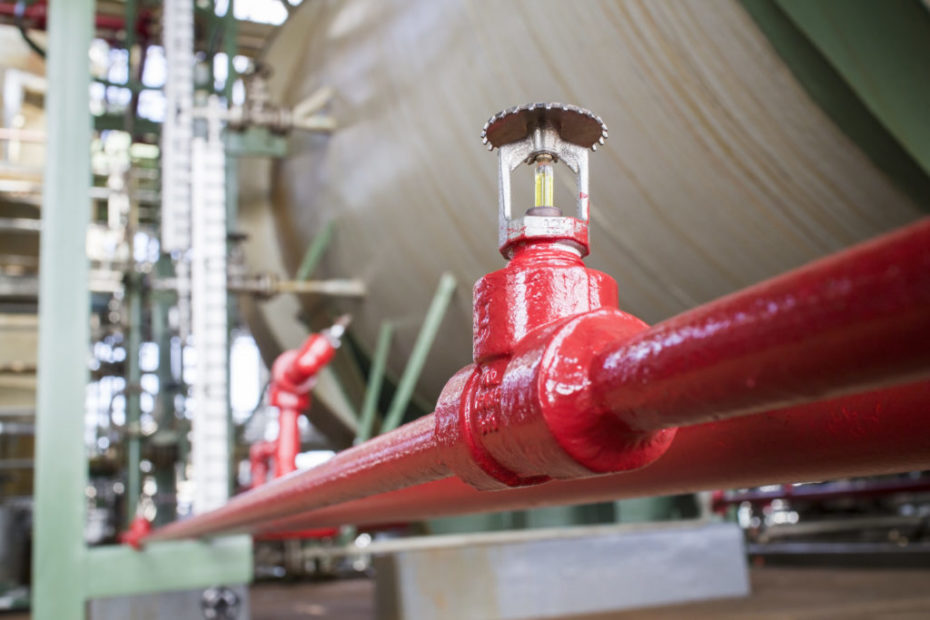Fire sprinkler systems are a crucial component of any building’s fire safety plan. When installed and maintained properly, they can save lives and prevent catastrophic property damage. However, too often building owners neglect routine testing and inspection of these critical systems, putting occupants at severe risk in the event of a fire.
The National Fire Protection Association’s NFPA 25 standard outlines the minimum requirements for inspection, testing and maintenance of water-based fire protection systems. Adhering to these guidelines is essential to ensure your sprinklers will operate as intended when needed most.
Weekly Inspections
- Visually inspect all sprinkler heads and piping to check for signs of leakage, corrosion or physical damage. Any issues detected should be addressed immediately.
- Verify that control valves are in their normal open position. Closed valves can prevent water from reaching sprinklers during a fire.
- Check water pressure gauges on wet pipe systems. Pressure should be within the normal range.
- For dry, preaction and deluge systems, inspect system air pressure gauges. Air pressure should be within the acceptable range.
- Inspect and test fire alarm systems, both automatic and manual activation. Ensure proper signal transmission to monitoring centers or internal alert systems.
- Verify that fire doors are unobstructed and in proper working order. Blocked fire doors compromise compartmentalization.
- Inspect mains and branch lines in areas prone to freezing. Ensure adequate freeze protection is in place for cold weather.
Monthly Inspections
In addition to weekly checks, several activities should be performed monthly:
- Visually inspect all control valves again. Ensure they are unobstructed, free of leaks and in the open position.
- Check pressure gauges on wet pipe systems again. Confirm pressure readings are as expected.
- Inspect the fire department connection. Check for any damage, obstructions and ensure caps are in place.
- For dry pipe, preaction and deluge systems, inspect air pressure gauges again.
Quarterly Inspections
- Pressure reducing valves should be inspected quarterly. Verify proper settings and ensure valves are functioning appropriately.
- Inspect and test all waterflow alarm devices. Ensure alarms properly transmit to monitoring centers when activated.
- For hydraulically calculated systems, check that the nameplate is properly affixed and legible. Nameplate provides key design info.
- Visually inspect piping and hangers in seldom accessed areas, like crawl spaces. Check for any signs of leakage or damage.
Annual Inspections
NFPA 25 requires detailed annual inspections be completed by qualified personnel. Consider contracting certified sprinkler technicians. Key annual activities include:
- Perform main drain tests on all systems. Ensures valves open properly and confirms adequate water supply.
- Trip test all dry pipe valves. Involves fully activating system and ensuring proper operation. Must be reset afterward.
- Conduct full trip tests on all deluge valves. Verifies proper activation and water delivery. Reset system after testing.
- Thoroughly inspect all system strainers. Check for damage and clean or replace strainer elements as needed.
- Test antifreeze solutions used in systems. Adjust concentration if necessary to protect against freezing temps.
- Visually inspect all sprinkler heads and nozzles. Replace any with signs of leakage, corrosion or damage.
- Functionally test all water spray nozzles at full flow. Verify spray pattern and flow rate are correct.
- Inspect hangers, piping and fittings. Check for signs of damage or weakness. Address any issues found.
Preventing Loss with Proper Inspection
Neglecting routine inspection and testing of fire sprinklers can have devastating consequences. Faulty systems may fail to activate or be ineffective when needed most.
Partner with an experienced fire protection contractor to ensure all testing and maintenance is completed as required. Report any deficiencies immediately and have qualified technicians make repairs.
Though adhering to NFPA 25 guidelines requires an investment of time and resources, the payoff is well worth it. Reliable fire sprinklers save property and–most importantly–protect human lives. Don’t cut corners on routine inspection and testing.
Additional Recommended Practices
Beyond the minimums required by NFPA 25, consider these additional best practices:
- Establish a weekly walk-through inspection routine for internal staff. This provides helpful redundancy beyond technician inspections.
- Keep detailed testing and inspection records. These provide helpful documentation in case any legal issues arise.
- Have a qualified system designer periodically review sprinkler plans and inspect systems for optimal coverage.
- When modifying building layouts, consult the system designer to ensure changes don’t impact sprinkler effectiveness.
- Establish a training program to teach internal staff about the basics of your fire sprinkler systems.
- Consider participating in third-party verification programs that audit inspection practices for quality assurance.
- Replace sprinkler heads older than 50 years even if no defects are apparent. The safety margin degrades over time.
- Water supply adequacy should be verified after any modifications to the municipal supply system.
- Identify a backup water supply in case primary supply becomes unavailable during a fire incident.
These extra measures provide an added layer of protection and peace of mind. Protecting human life is the top priority.
Final Thoughts
Regular fire sprinkler inspection, testing and maintenance provides the line of defense against catastrophic property loss and danger to human life. NFPA 25 sets the minimum standards all building owners must meet.
Partner with qualified technicians and contractors to ensure all systems are routinely checked and confirmed to be in reliable working order. Any deficiencies found should be quickly remedied.
In addition to preventing tragic loss, proper diligence protects you from any potential liability issues.
